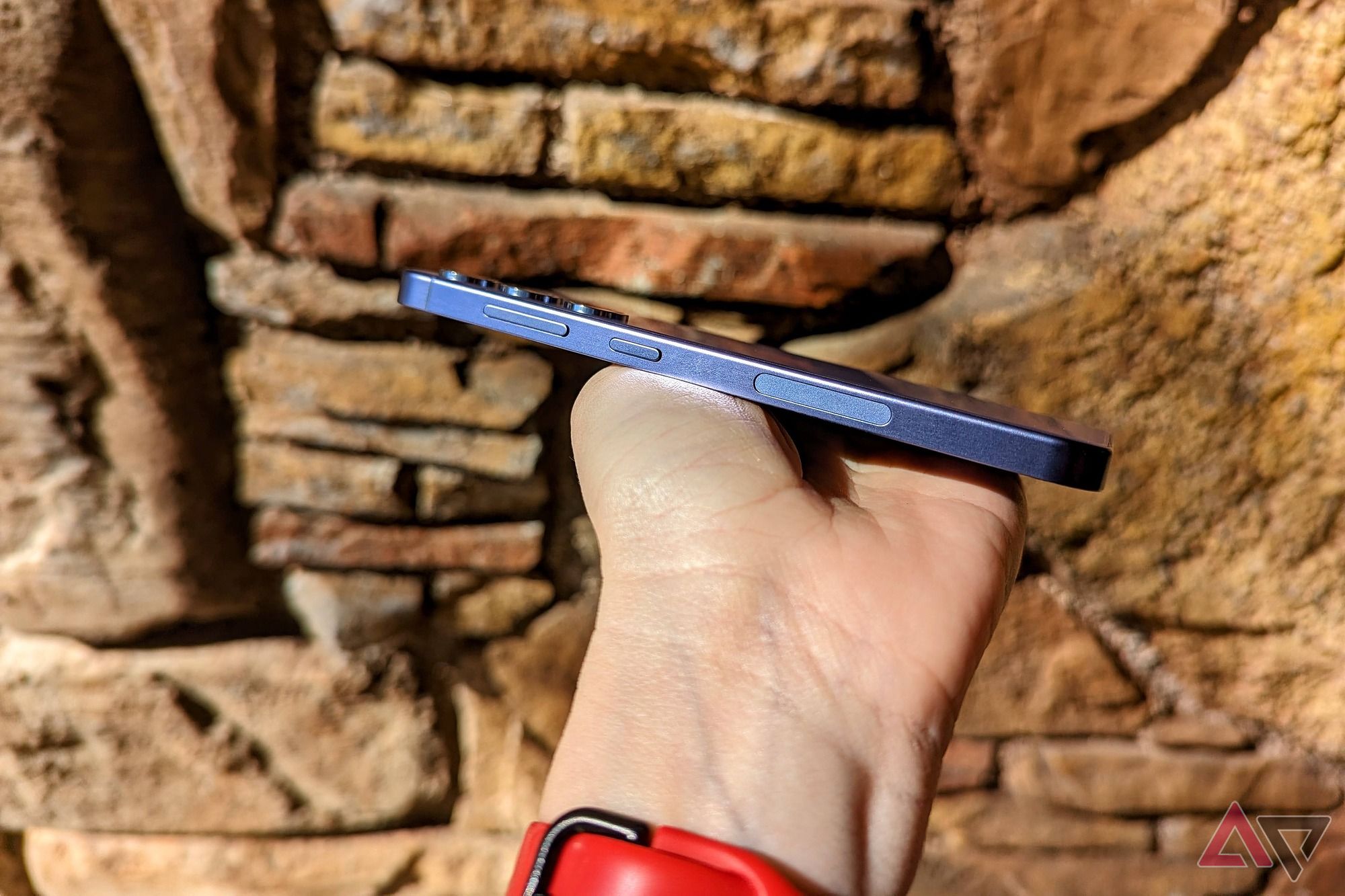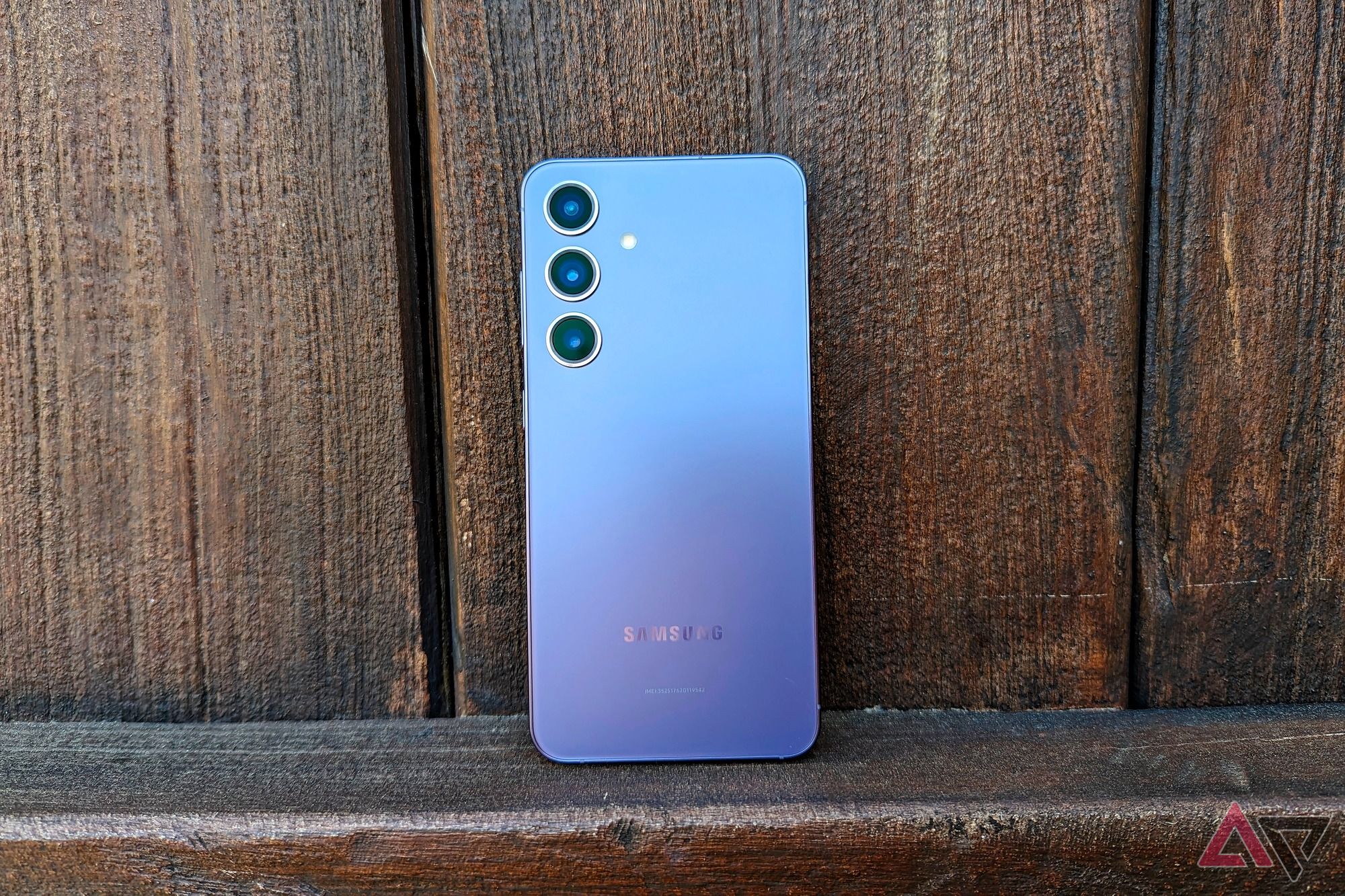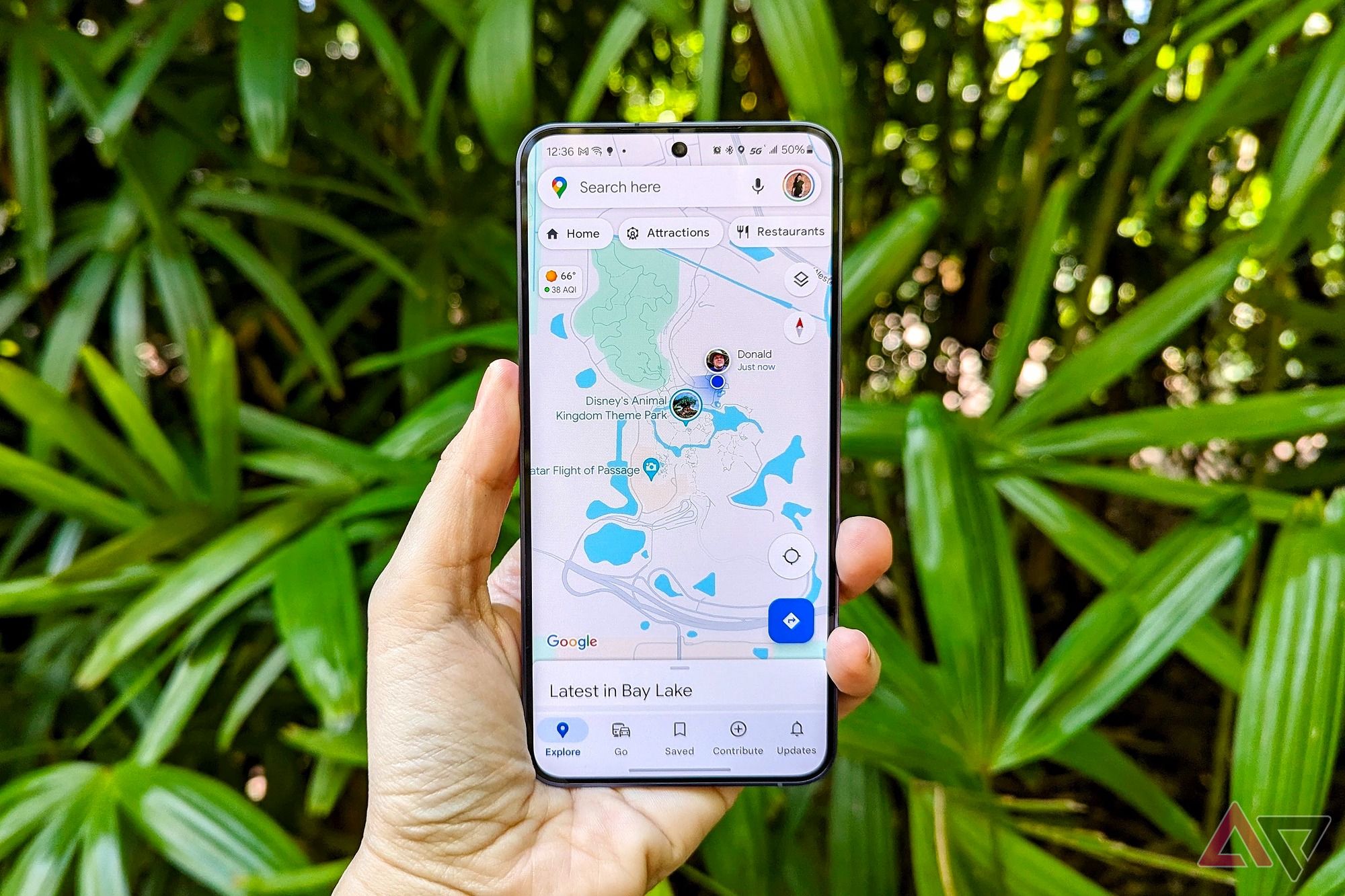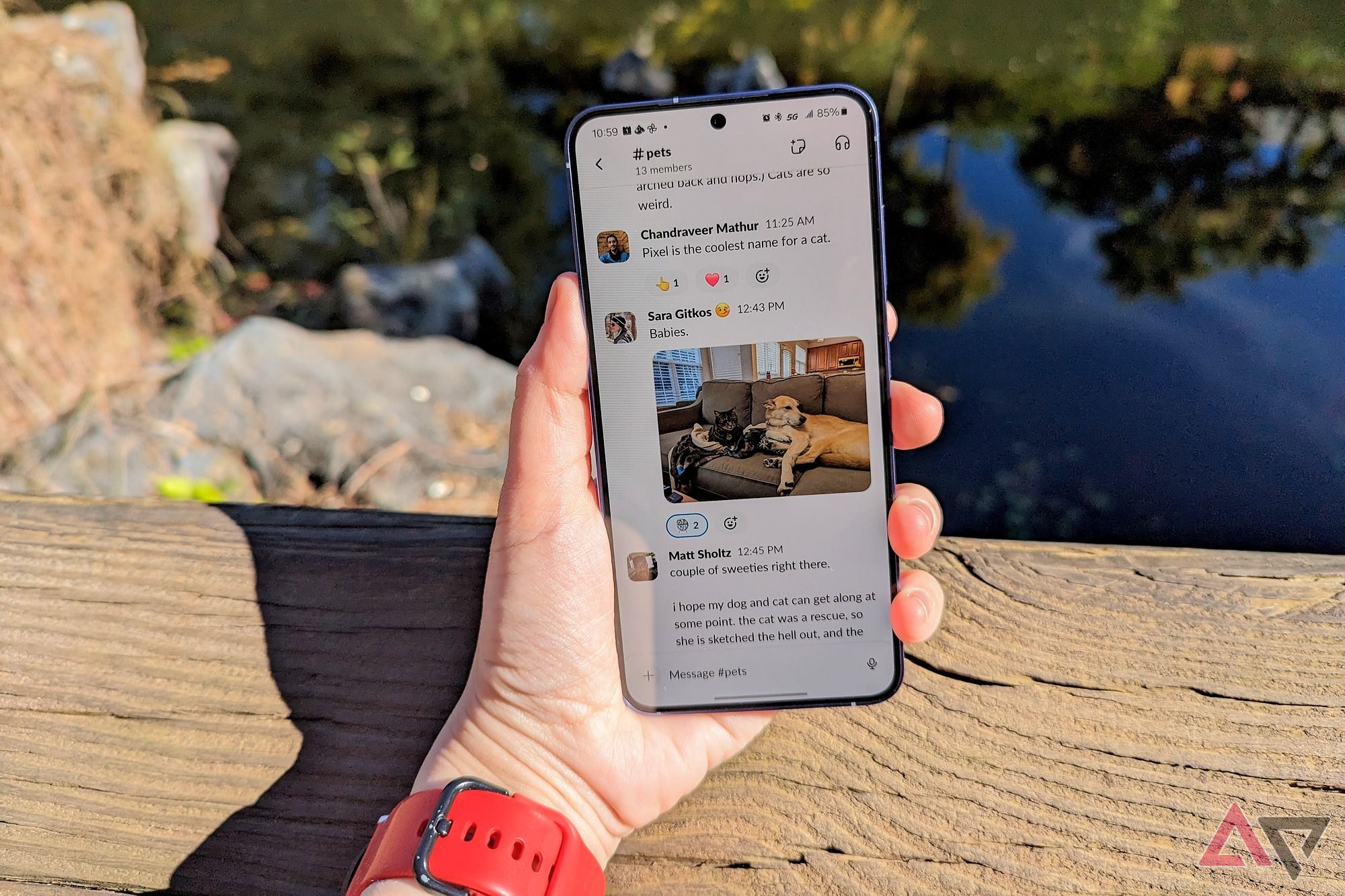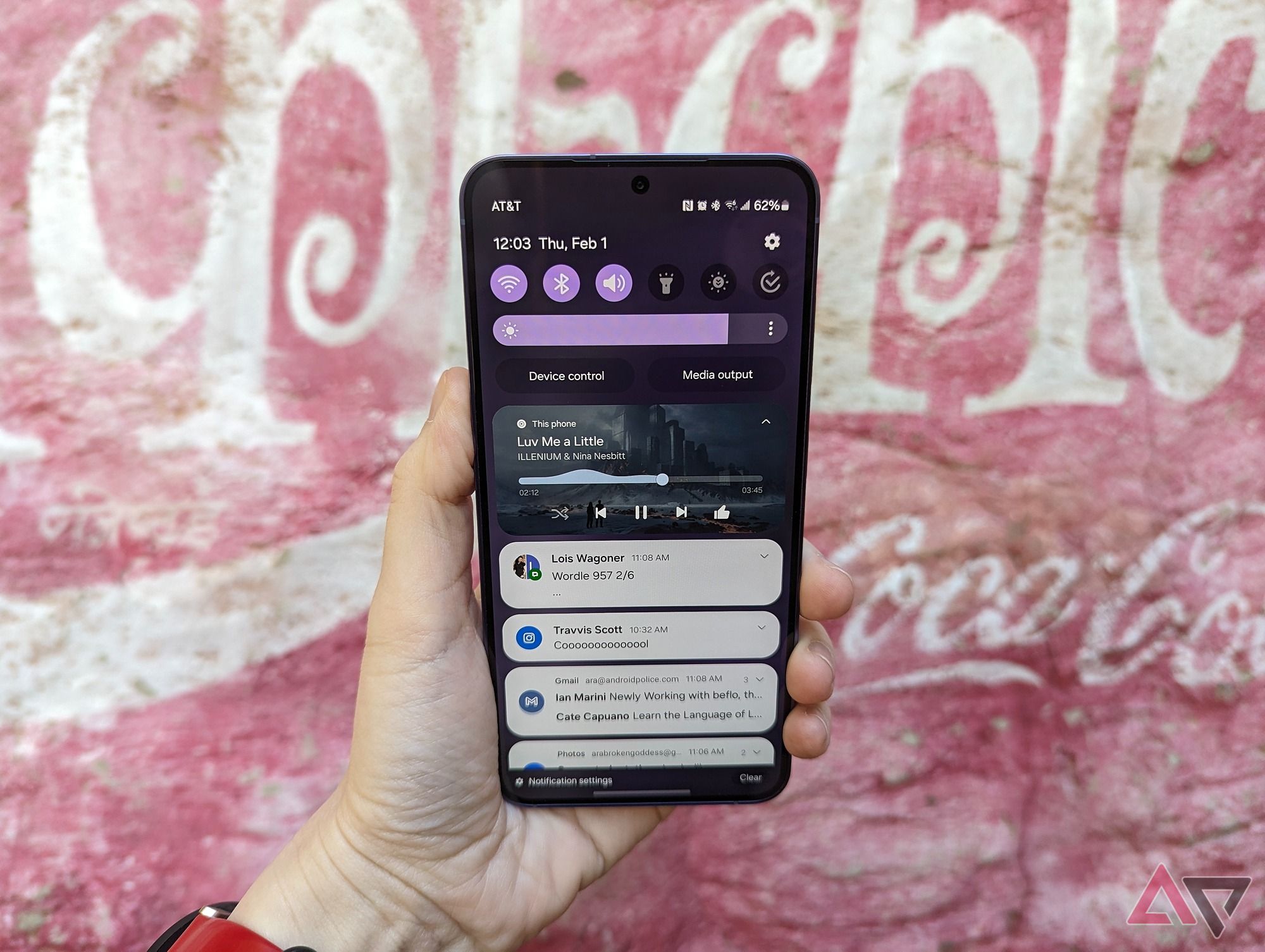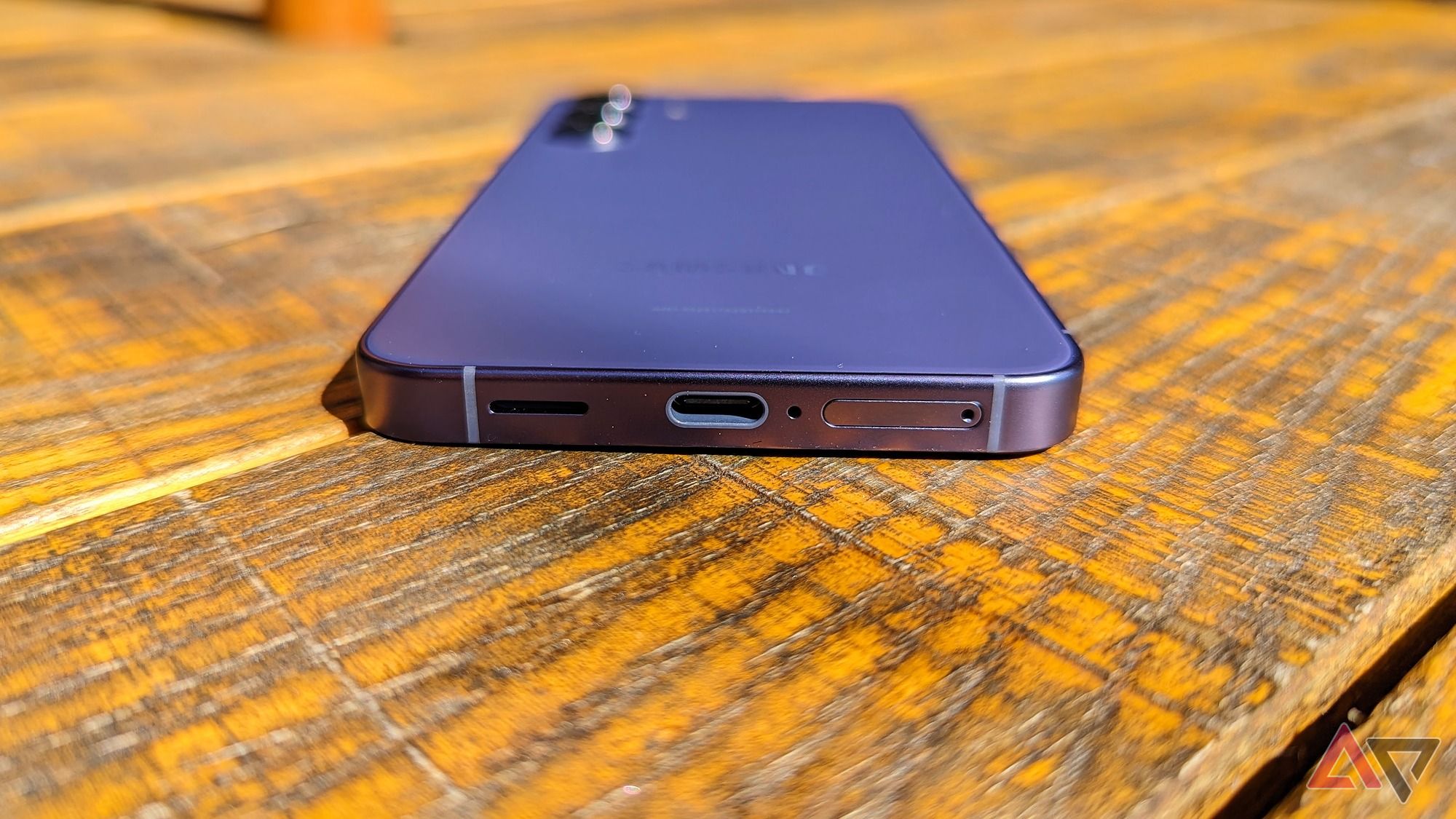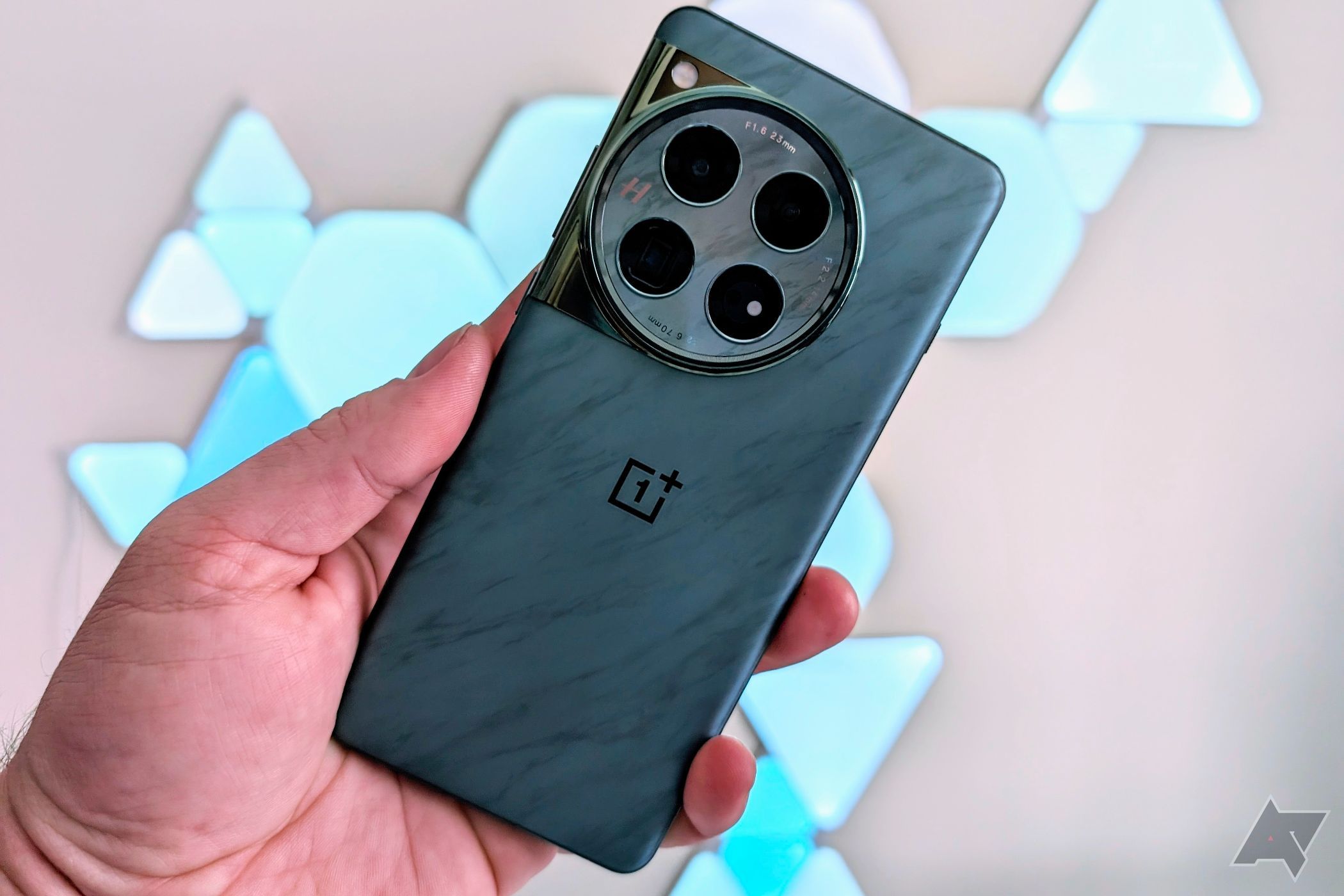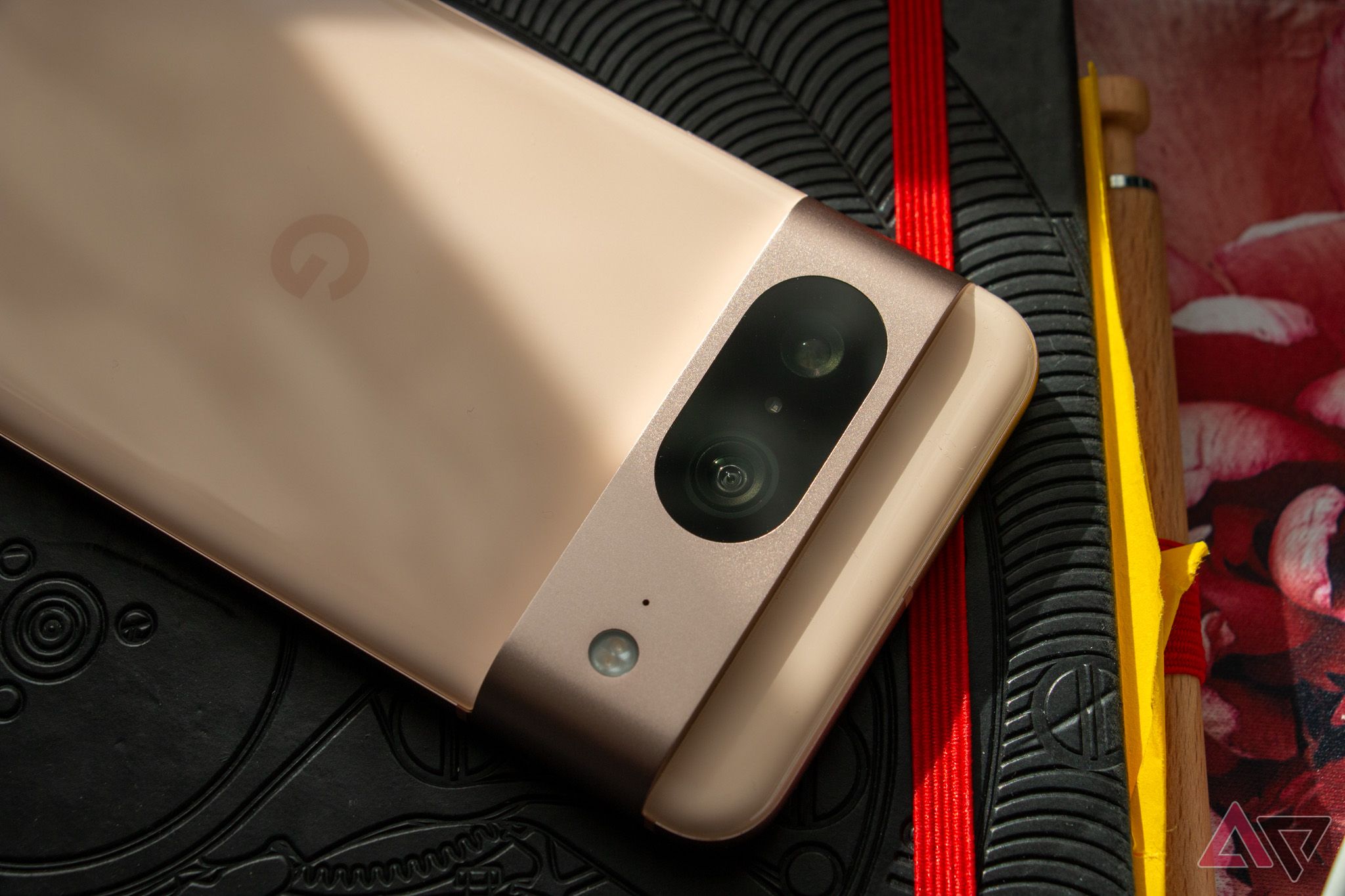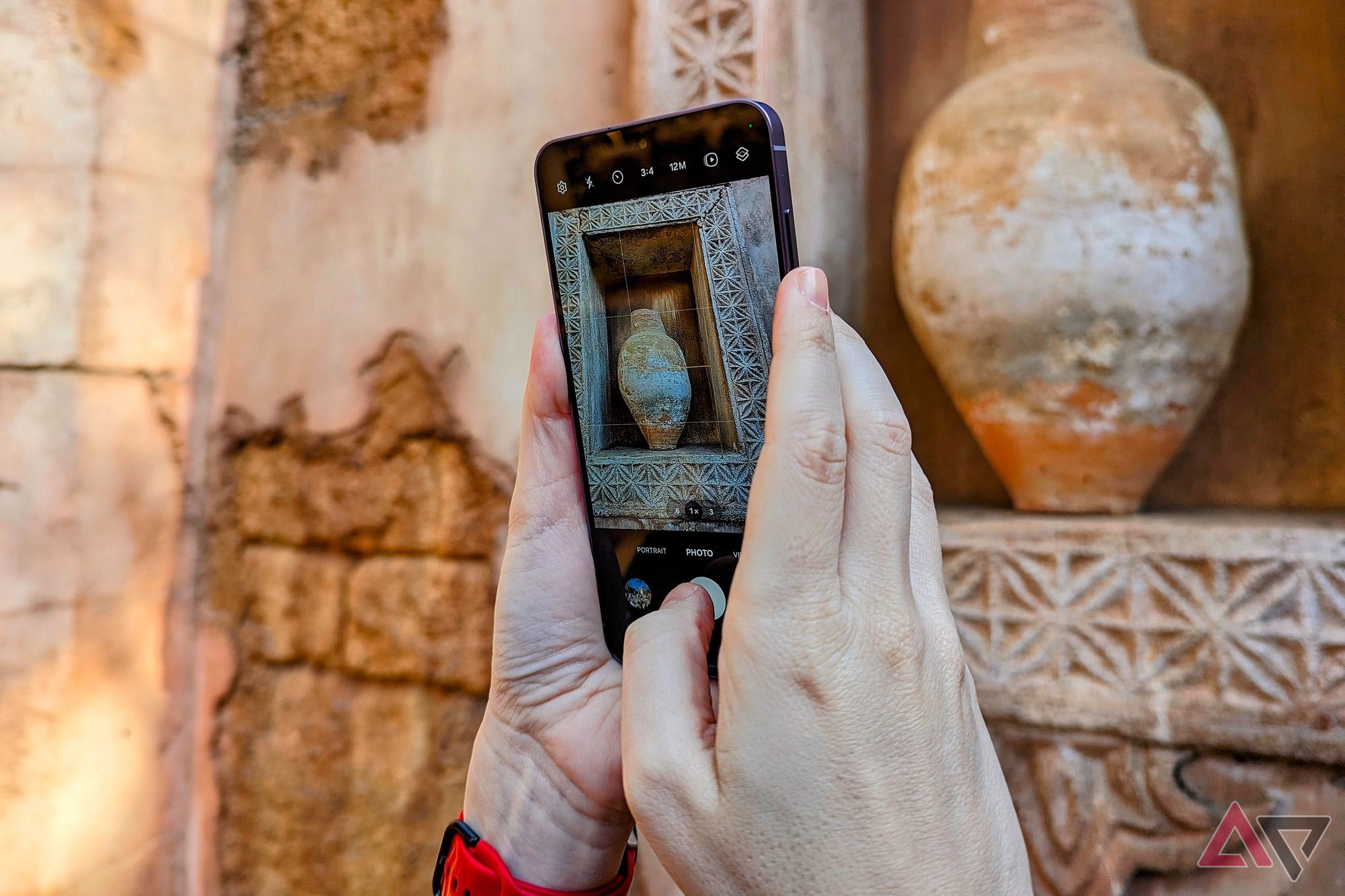If you want a cutting-edge phone these days, you look to a sick foldable phone or some Pro Ultima Max of a beast. But for those of us who want a phone that fits in our hands, our pockets, and our budgets while still delivering the premium experience we know and demand from the most important electronics in our lives. While the Galaxy S24 Ultra struggled to excite even the most faithful of Samsung diehards, the relatively small upgrades in this year’s base-model Galaxy are arguably the most important of the series.
No, it’s not the Galaxy AI, but some fundamental upgrades to the screen and the device’s efficiency make the S24 the least iterative of an admittedly copy-paste year for Samsung. It may be stuck in the shadow of the overpriced Ultra and the sweet spot Galaxy S24+, but don’t sleep on Samsung’s smallest Galaxy S24.
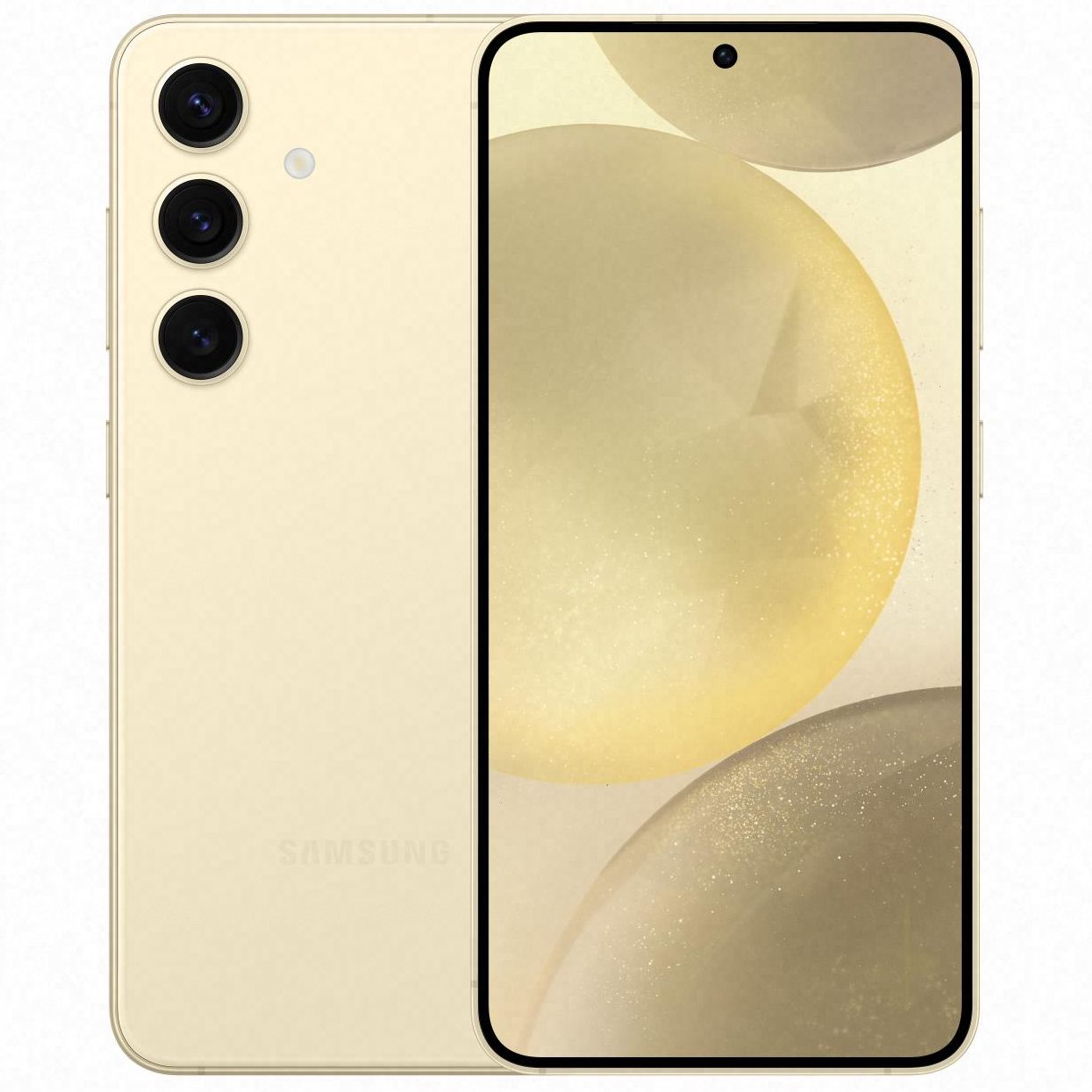

Samsung Galaxy S24
Staff pick
Galaxy AI is not the revolution Samsung promised, but even without it, the Galaxy S24 delivers the powerful performance we demand from a flagship phone, the flexibility of One UI’s multifarious features, and a screen that’s finally just as good as its S24+ and Ultra siblings. Just remember that Samsung’s cameras still have their particular “style” you’ll love or hate — and issues with motion and low light.
- SoC
- Qualcomm Snapdragon 8 Gen 3 for Galaxy (US), Exynos 2400 (worldwide)
- RAM
- 8GB
- Storage
- 128GB or 256GB
- Battery
- 4,000mAh
- Ports
- USB-C
- Operating System
- Android 14 and One UI 6.1
- Front camera
- 12MP, f/2.2
- Rear camera
- 50MP, f/1.8 OIS main; 12MP, f/2.2 ultrawide; 10MP, f/2.4, 3x telephoto
- Connectivity
- NFC
- Dimensions
- 147.1 x 70.6 x 7.6mm
- Colors
- Onyx Black, Marble Gray, Cobalt Violet, Amber Yellow, Jade Green, Sapphire Blue, and Sandstone Orange
- Display type
- AMOLED, 1-120Hz
- Weight
- 168g
- Charge speed
- 25W wired, 15W wireless
- IP Rating
- IP68
- Price
- From $800
- Stylus
- No
- Display dimensions
- 6.2″, 19.5:9
- Display resolution
- 2340 × 1080
- Charge options
- USB-C wired, Qi wireless
- SIM support
- Dual SIM (Nano SIM and eSIM)
- Cellular connectivity
- 4G LTE, 5G (sub-6 and mmWave)
- Wi-Fi connectivity
- Wi-Fi 6E, Wi-Fi Direct
- Bluetooth
- Bluetooth 5.3
- 8-10 hours screen on time per charge
- Adaptive refresh rate and 2.6K brightness make screen nearly perfect
- Snapdragon 8 Gen 3 stays smooth even under pressure
- Flat sides are easier to grip with a less smudgy finish
- Cameras have Samsung’s trademark wonkiness, especially the telephoto
- Missed out on Gorilla Armor’s anti-reflective surface
- 25W charging feels sluggish in 2024
Availability, network, and what’s in the box
Free on most carrier trade-ins and easily available everywhere else
Behold the nondescript mmWave window.
You can buy the Samsung Galaxy S24 for $800 right now at basically all electronic retailers and major phone carriers. The base model still has only 128GB of storage, but the 256GB model is only $60 more at $860. All three major carriers are offering a free Galaxy S24 with either a trade-in on an eligible unlimited plan or a new line on certain unlimited plans. During preorders, Samsung and other retailers offered a free storage upgrade to the 256GB model. While that has expired at this time, it’ll likely return for sweet S24 deals during major sales events like Memorial Day and Prime Day.
During this review, the unlocked Cobalt Violet Galaxy S24 Android Police purchased was tested on AT&T’s 4G and 5G networks, mostly on 5G and 5G+ — AT&T’s cringy name for mmWave and C-Band (mid-band). With the exception of an overloaded patch of nodes in downtown Orlando during a Lord of the Rings concert, it worked perfectly.
In the S24’s box comes a Galaxy S24 with a paper cover adhered to the screen — there is no pre-installed screen protector or anything covering the back/sides — a thin USB-C to USB-C cable, SIM ejector tool, and a super short Quick Start Guide. The box itself is almost ridiculously slim, and I highly, highly recommend opening it on a bed, couch, or other soft, padded surface; the lid doesn’t always release smoothly, and there’s not much holding the phone inside.
Design and display
Flat sides, bright screen, generic feel
Let’s not mince words here: this phone is 98.5% the same as the Galaxy S23 and 87% the same as the S22 and S21 before it. The build quality is just as solid and premium-feeling as it’s been for half a decade, and we’re even dealing with the same materials: Gorilla Glass Victus 2 and Armor Aluminum. Sorry, there’s no titanium here or glare-resistant Gorilla Armor; those are both exclusive to the $1,300 Ultra.
Samsung has changed a grand total of six external design factors on the Galaxy S24 compared to its S23 predecessor. The flash has moved down less than half an inch, the phone itself is a millimeter taller, the screen is 0.1 inches larger — and brighter and more adaptive — one pinhole microphone has moved from the bottom to the top of the device. The speaker grill is now one long line rather than six little lines, and the frame now looks like an iPhone.
The frame swapping from curved slides to flat is pretty straightforward, but its finish is a much more tangible improvement. The S23’s shiny, almost mirror-finish frame attracted fingerprints like there’s no tomorrow, as well as making the phone more slippery in the hand. The S24’s frame is more of a brushed or matte finish that hides blemishes and offers a little extra purchase for your fingers. This texture, combined with the flat sides and not-quite-beveled edges, makes the S24 easier to keep a secure hold of.
Flush with that frame, the matte Gorilla Glass back is a bit duller than I’d like — especially on the Cobalt Violet, which is far too muted for its bold, lustrous moniker — but in the right light, it can come off as quite beautiful. Marring that smooth glass are the three camera lenses of the S24; each separated just enough for dust and lint to cling to the seams.
I still sorely miss the solid, cohesive camera module that gave the S21 and S22 their style; these disjointed, individual cameras on an otherwise flat muted phone make it feel like some generic reference device rather than the most important Android series of the year. Especially as the main visual change of the S24 makes it look more like a competitor, Samsung’s once undeniable style is now nearly nonexistent. Thank the universe for bold, boss-level Galaxy S24 cases that bring some life to this device.
Flush with that frame, the matte Gorilla Glass back is a bit duller than I’d like — especially on the Cobalt Violet, which is far too muted for its bold, lustrous moniker — but in the right light, it can come off as quite beautiful.
Coming back to the Corning Gorilla Glass Victus 2 screen, I am especially bummed we couldn’t get the Gorilla Armor on the S24. (Yes, I know; no room in the budget.) Don’t get me wrong, Victus 2 is plenty sturdy, and I didn’t scratch the front or back glass even when I very carefully set it directly on jagged stone or concrete for my review photos. But eliminating glare on the screen, especially when outside, would be a godsend, even though the new 2,600-nit maximum brightness can cut through it in most full-sun exposures.
As fun as that number is to throw around, however, most of the time, you’ll only see the same brightness as the S23 and S22 thanks to Adaptive Brightness. The other screen upgrade is useful at all times and in all places. After years of the 1-120Hz adaptable refresh rate being limited to the Ultra and Plus models, it’s standard on all three, and that added efficiency helps this phone eke out more screen time per charge, not to mention making the experience smooth whether you’re gaming, rage-commenting on Reddit, or scrolling through a few miles length of webcomics.
After a fix is rolled out, I’ll update this review with a deeper dive into the screen’s color gamut and dynamic range because the “washed out” display bug impacted my Galaxy S24. The screen looks just fine, as this bug makes the Screen mode look the same whether you’re on Neutral or the bolder Vivid, but you want to re-judge this screen with it in perfect working order. Right now, mine is a hair less vivid than my S23 (with Screen mode set to Neutral). Samsung Spain has said this is intended behavior, but I’m hoping this is a miscommunication as the feature is essentially non-functional.
One final hardware complaint I am compelled to make is that the base-model S24 still lacks UWB support, which both the S24 and S23 Ultra have had for years. You’ll likely never miss this omission unless you want to try digital car keys or are obsessed with smart tags, but the little one deserves to have this, too!
Software and performance
Powerful performance for gaming and productivity, but the AI is entirely forgettable
That screen mode issue is the only launch bug I’ve encountered so far on the Galaxy S24, and overall performance showcases both the stability of Samsung’s One UI 6.1 and the Snapdragon 8 Gen 3’s powerful-yet-efficient chipset. Even resource-intensive games like Township and Merge Dragons played smoothly — well, as smoothly as these overstuffed IAP machines can with inefficient coding — and hopping between apps was so smooth that I sometimes forgot I’d even left my original one. It gives me hope that the S24 will still be running well even as it goes through its promised seven years of system and security updates.
Samsung put the Galaxy AI suite front and center in its positioning of the Galaxy S24. Still, their niche appeal will likely make you forget they’re there unless you’re enough of a masochist to use Samsung’s keyboard instead of Gboard or SwiftKey. While live translation of phone calls or voice recordings can be amazing when it works, once dialects get involved, things can go to pot quickly.
The only new feature I found myself using with any regularity was Circle to Google Search, which is essentially a reskinning of Google Lens and is machine learning rather than AI. Samsung Keyboard’s tone-changing feature missed the mark far more often than it actually improved on my original text — SwiftKey’s Bing-powered version and the Bard/Gemini-powered version in Google Messages produced consistently better results.
Samsung Keyboard’s tone-changing feature missed the mark far more often than it actually improved on my original text
The features you’re more likely to notice and appreciate are the same One UI features from your last 2-3 Samsung phones. Even without downloading Good Lock to get down and dirty with my phone theming, One UI’s handling of Material You and wallpaper palettes makes it shockingly easy to customize my S24 exactly how I like it. From the lock screen to the backgrounds of my many daily alarms, from my ringtones to my quick settings colors, everything is quite easy to adapt to my own personal flair. (Whatever you do, don’t ever open Galaxy Themes. They’re old and janky.)
One UI is often called “bloated” for just how much they shove into their settings app — no Samsung feature ever truly dies, it just gets hidden away in some far-flung submenu — but where you least expect it, invaluable little tweaks to standard Android features will change the entire way you interact with your phone. Temporary mute is one of my favorites, as it’ll ensure that I start hearing my phone again at some point after muting it for a podcast recording. (I only wish I could use it to temporarily set a phone to vibrate, too.) And being able to set different orders for Quick Setting’s small and extended buttons is quite handy, too.
Another feature that tends to get maligned is Samsung’s Modes and Routines. While Focus/Work mode and Sleep mode are fairly common on most phones today, being able to set other device modes — such as at a concert/movie or chilling on the weekend — truly saves me time and helps me cut down on distractions without completely leaving me in the dark.
Of course, Samsung’s unusual defaults for many core features — swapping the recents and back buttons by default on the nav bar and having the power button default to Bixby instead of turning the phone off, for example — can make it a bit of a bear if you’re setting up your first Galaxy phone. Once you have everything as you like it once, though, it’ll follow you to every Galaxy phone in your future with Smart Switch.
Speaking of Samsung’s frustrating defaults, the most disappointing software on the whole phone isn’t in the gimmicky Galaxy AI; it’s in the camera software, and if you’ve used a Samsung phone in the last eight years, you know exactly what I’m talking about.
Camera
Nothing here is new, and that’s not okay
As Phones Editor Will Sattelberg and Gadgets Editor Taylor Kerns called the camera experience a “mixed bag” on the Galaxy S24 Ultra and S24+, but I’m not quite as charitable. Everything wrong on Samsung’s camera experience for the last five years is still wrong on the S24, from the tendency to over-brighten and oversaturate photos for a more Insta-worthy shot to Samsung’s inability to handle any significant motion to a camera app that’s entirely too convoluted.
In daytime lighting conditions with landscapes or still targets, you can get some excellent shots with the Galaxy S24 with a bit of know-how and more than a bit of luck, but both Google and OnePlus sell excellent flagship phones that don’t have even half as many issues with motion or over-brightening as the S24, for the same price or lower. Samsung hasn’t been able to call itself a camera leader outside of Pro mode for years, but the cameras on this phone are officially its biggest dealbreaker.
I took the S24 to a concert last weekend, and out of 61 photos, maybe 3-5 aren’t grainy or blurry.
And this is a software problem, to be sure. This could be fixed, and we know this because great shots are possible. Still, they’re only consistently possible if you reach a level of Samsung Camera enlightenment that only true worshippers of the Galaxy ecosystem will ever know. We also know this because the camera sensors Samsung is using inside the Galaxy S24 are in numerous other devices, and no other smartphone with these sensors has the same shutter speed and focus issues that we see on Samsung.
The Galaxy S23 was my daily driver for all of 2023, and this S24 will likely be my ride-or-die until at least the fall. I’m used to overshooting and having to drag that brightness bar down for almost every single shot, but I would be negligent if I didn’t admit to needing to do these things when taking photos on a flagship-grade phone that starts at $800.
Yes, I still need more time to play with these cameras, and yes, maybe a future update will get the shutter speed and blur under better control. Maybe Samsung will finally see the light and rejigger its photo processing to aim for truer-to-life colors and lighting rather than cranking everything to 11 and letting you and Lightroom duke it out. But I’m judging the cameras I just spent three hours walking around Walt Disney World with, and if you care about photography even a little, you need to take a long, hard look at the Pixel 8 instead.
Battery life and charging
This battery’s hard to kill, but these speeds are killing me
Another department where Samsung changed absolutely nothing is its charging technology. The Galaxy S24 is still stuck at 25W wired charging and 15W standard Qi wireless charging. That’s right folks, no MagSafe, no 45W charging — but that still feels slow next to OnePlus and any Chinese-based brand — and there’s still not even an option to check your battery stats from the last full charge, only on a full 24-hour cycle and 2-hour increments.
The battery itself is 200mAh larger, making it 4,000mAh, and the improved efficiency of a proper variable refresh rate screen and the Qualcomm Snapdragon 8 Gen 3 helped it eke out 8-10 hours per charge on adaptive brightness. On a morning full of uncut sunshine and camera testing, the max brightness impacted the battery a bit, but I still had over half my battery after lunch and managed to finish the day without a top-off.
This phone barely sips any battery in standby mode, which is why screen on-time is the bigger indicator of battery life here. On days I wasn’t glued to my phone for an ungodly amount of time, I could go to bed with 35-45% battery remaining semi-easily, so sometimes it lasted almost two days on a charge. On those weekend days I devoted myself to my app addictions, I could make the S24 cry for a charger by dinner time. (Though it almost always left my eyes crying, too, from squinting at tiny text on poorly translated webtoons for that long.)
Competition
No one beats Samsung’s hardware, but almost everyone beats its cameras
As mentioned in our camera section, the Pixel 8 and OnePlus 12 can offer more consistent photos thanks to Google’s secret sauce and OnePlus’s Hasselblad partnership, and both either meet or beat the S24’s price tag.
The OnePlus 12 has hardware that’s almost even with Samsung: an absolutely gorgeous screen, 80W wired charging and 50W wireless charging that just puts the last decade of Samsung Super Fast Charge to shame, and the mesmerizing marbled glass on the Flowy Emerald colorway. The cameras here aren’t quite on the level of the Pixel 8 Pro, but you won’t struggle with overblown photos or every twitch making your cat’s photos blurry. The only problem is that OnePlus’s software is far less polished than One UI. You get used to it, but if you’re accustomed to Galaxy’s overflowing toolbox, the half-filled tool belt of Oxygen OS may sour your experience on the OnePlus 12.
Sitting $100 below the Galaxy S24 despite seeing a price hike this year, the Google Pixel 8’s cameras look like goddamn magic next to the Galaxy. Colors are more accurate, you’ll see better contrast and less grain in less-than-ideal lighting, and the Pixel Camera handles moving targets like kids and pets better than everyone else in the game, save Apple. (At least here in the United States; some international brands get downright insane with their cameras.)
As mentioned in our camera section, the Pixel 8 and OnePlus 12 can offer more consistent photos thanks to Google’s secret sauce and OnePlus’s Hasselblad partnership, and both either meet or beat the S24’s price tag.
The Pixel 8 is also scheduled to receive seven years of system and deploys monthly updates just as fast as Samsung — and, of course, gets the latest version of Android weeks or months earlier than the Galaxy S24 will. Unfortunately, Google breaks features or entire phones slightly too frequently with errant monthly updates or unstoppable Google Play Services rollouts.
I wouldn’t upgrade to the Galaxy S24 from the S23 or S22, but if you’re coming from an S21 or older, you’ll be happy with this phone so long as you’re not constantly taking tons of photos of your pets or preschoolers. The Galaxy S23 is sticking around for $700, but I wouldn’t recommend buying it instead of the S24 unless you can get it for $600 or under, something that’s unlikely to happen as the Galaxy S23 FE is sitting pretty at the $600 price point. The FE’s cameras are even more inconsistent than the S24, though, and it has a Snapdragon 8 Gen 1, making it two full processor generations behind it.
Should you buy it?
If you like small but super smartphones, the S24 is perfect outside its unreliable cameras
It doesn’t break the mold or even dare to bring substantial style to itself, but the Galaxy S24 is essentially the Good Ol’ Reliable of the smartphone market: you know exactly what you’re getting on both the good and the bad fronts. And as much as I crow about these cameras, if you’re taking photos of food and vacation spots for your Insta and the latest TikTok craze, the Galaxy S24 will handle it just fine. I just think you and I both deserve better from a phone this expensive.
You can live quite comfortably on this phone, and after spending 6-14 hours a day on my Galaxy S23, I fully intend to do the same with this Galaxy S24. One UI’s tweaks feel comfortable, the screen will be absolutely perfect once that launch bug is squashed, and once combined with a magnificent MagSafe case and a trusty phone grip — between pinky-propping and texting thumb, my hands can’t take much another RSI — this lithe but luxurious pocket-friendly phone will be annoying camera app from perfection.


Samsung Galaxy S24
Staff pick
It may blend into the background these days, but the Galaxy S24 delivers on every front except the cameras, and even those can turn out some good shots (and some truly terrible ones). The brightness and adaptive refresh rate now finally match the Plus and Ultra, and the battery life can even keep up with my app addiction.
Source link

